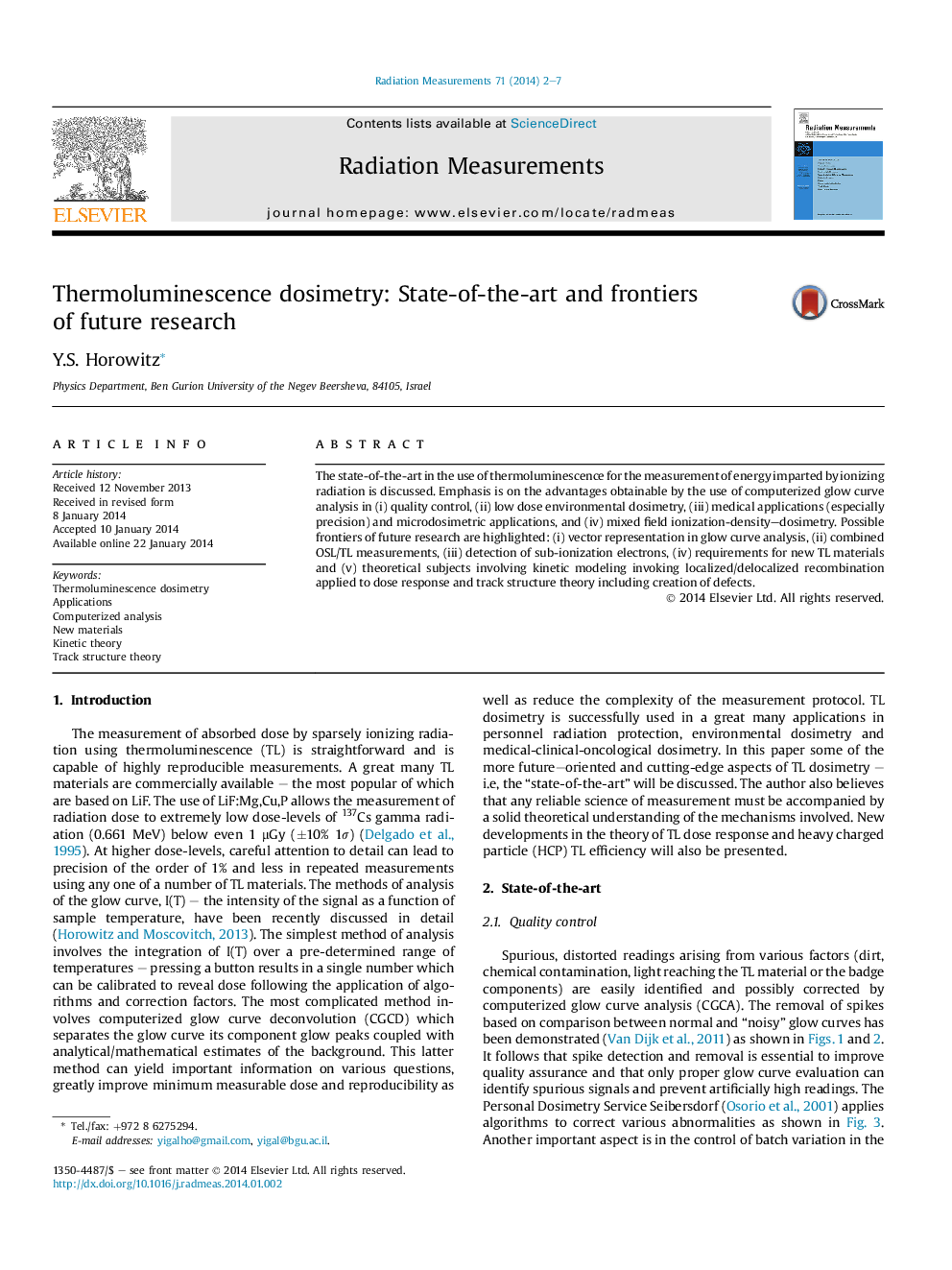| Article ID | Journal | Published Year | Pages | File Type |
|---|---|---|---|---|
| 1880539 | Radiation Measurements | 2014 | 6 Pages |
:•State of the art in thermoluminescence dosimetry.•Benefits of computerized glow curve deconvolution.•Frontiers of future research:new materials, mixed-field dosimetry.•Localized/delocalized kinetic theory:ionization density dependence.•Kinetic theory:creation of defects:track structure theory.
The state-of-the-art in the use of thermoluminescence for the measurement of energy imparted by ionizing radiation is discussed. Emphasis is on the advantages obtainable by the use of computerized glow curve analysis in (i) quality control, (ii) low dose environmental dosimetry, (iii) medical applications (especially precision) and microdosimetric applications, and (iv) mixed field ionization-density–dosimetry. Possible frontiers of future research are highlighted: (i) vector representation in glow curve analysis, (ii) combined OSL/TL measurements, (iii) detection of sub-ionization electrons, (iv) requirements for new TL materials and (v) theoretical subjects involving kinetic modeling invoking localized/delocalized recombination applied to dose response and track structure theory including creation of defects.
